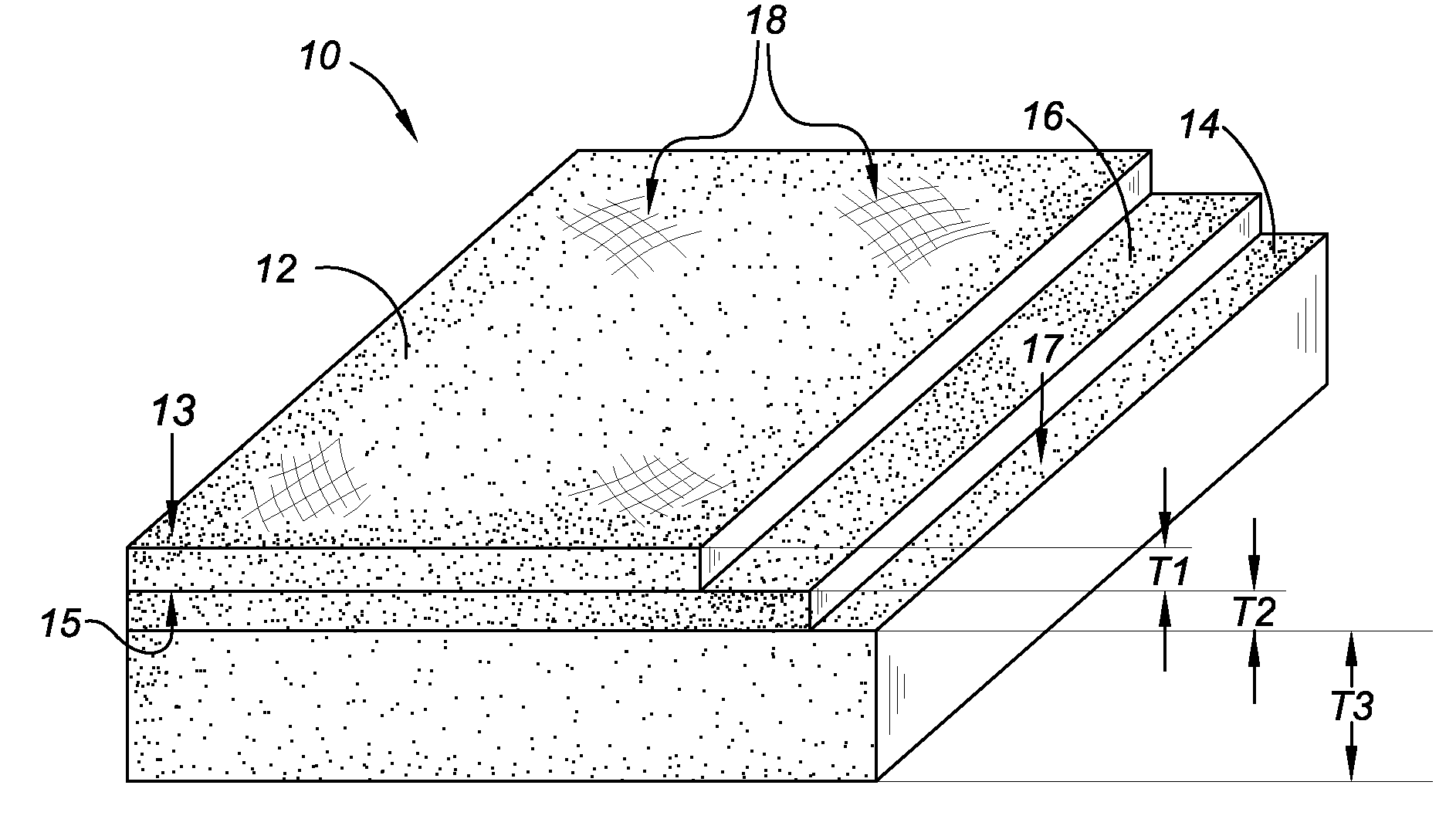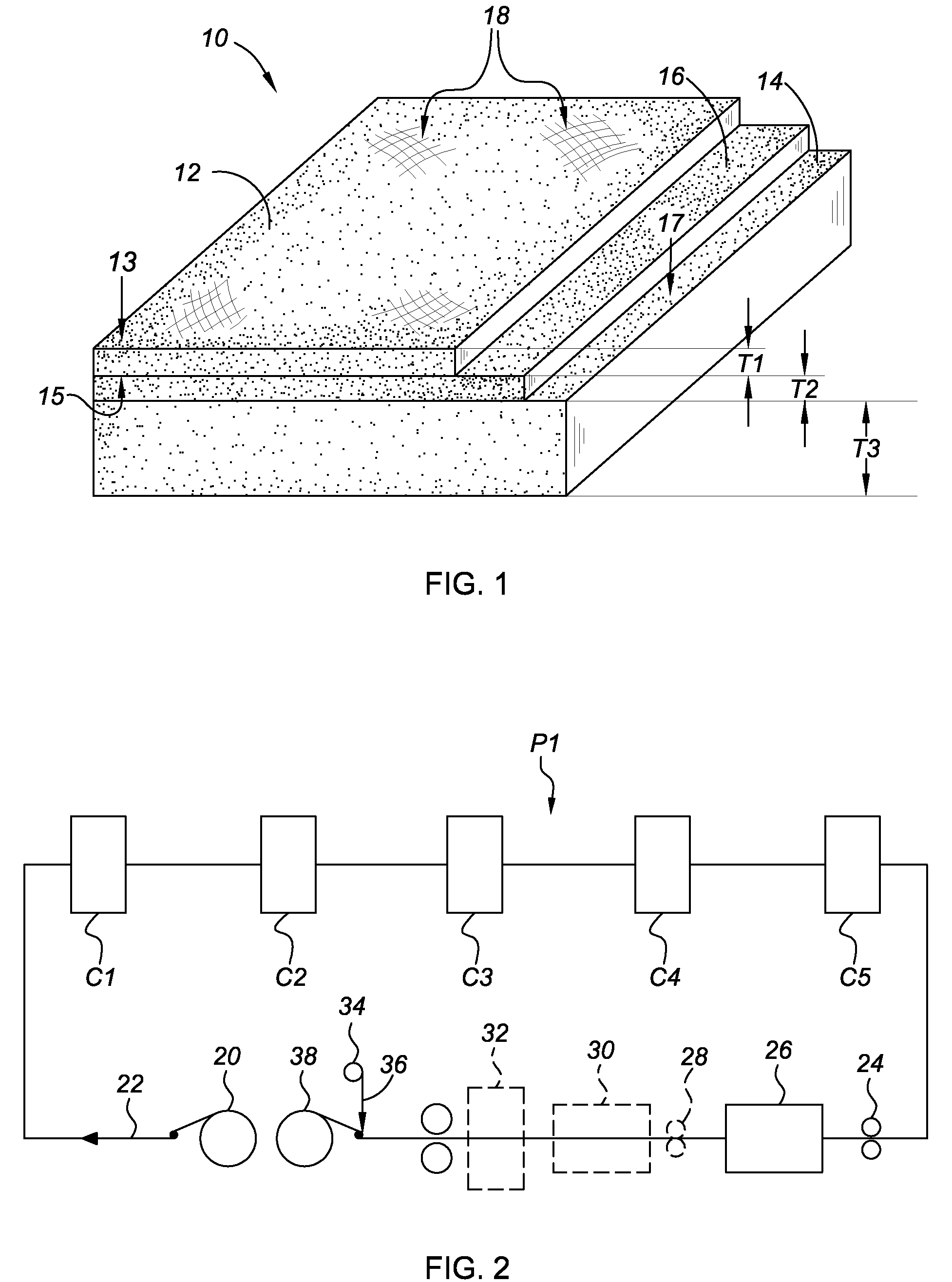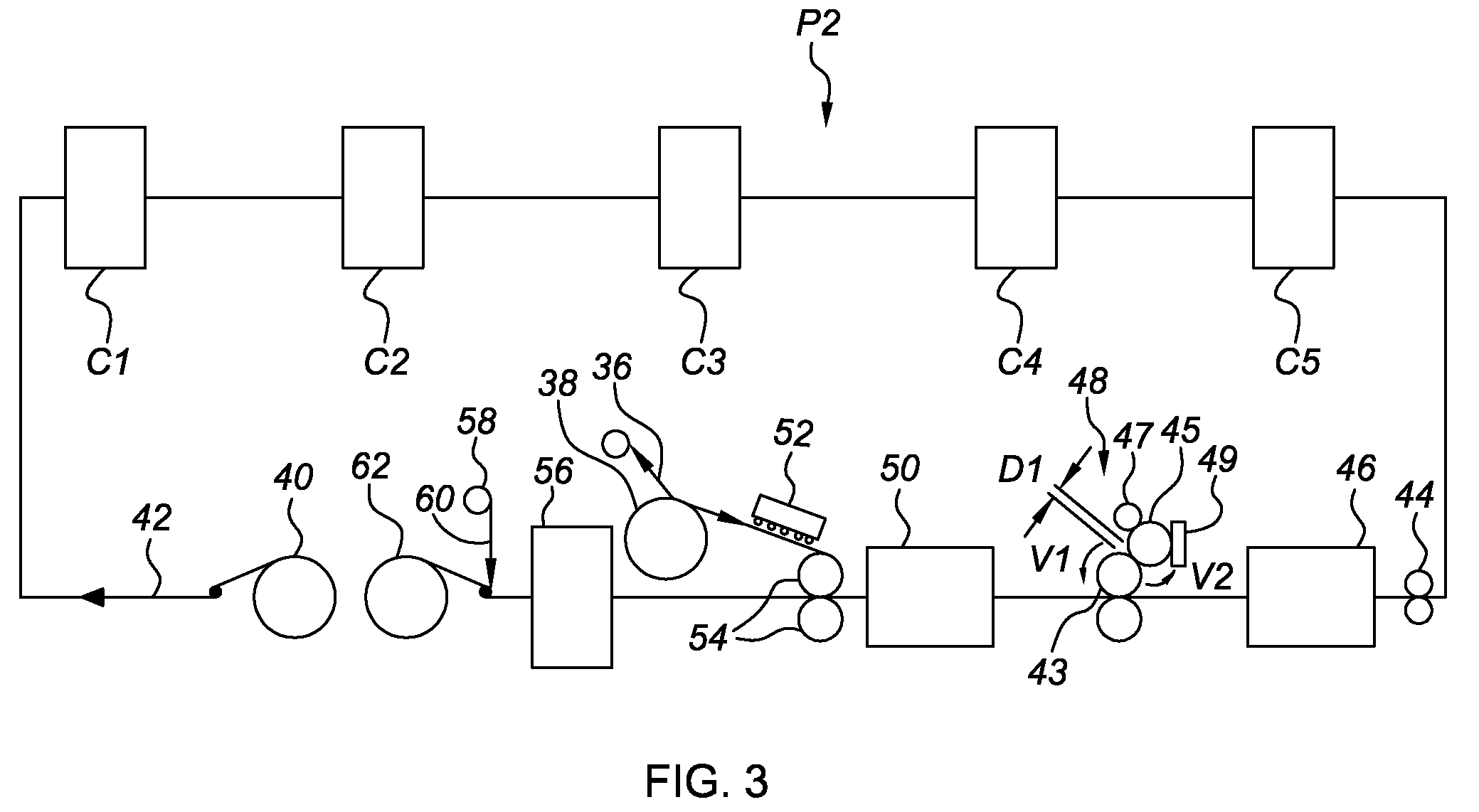Bimetal laminate structure and method of making the same
a laminate structure and metal technology, applied in the field of metalpolymermetal laminates, can solve the problems of reducing the thickness of the monolithic metal substrate, reducing the robustness of the decorative surface, and limiting the use of certain monolithic metal substrates to achieve the desired “finished metallic look” for the decorative surface, etc., to achieve the effect of reducing the cost of expensive monolithic metal substrates, eliminating substantially all facial defects, and less expensiv
- Summary
- Abstract
- Description
- Claims
- Application Information
AI Technical Summary
Benefits of technology
Problems solved by technology
Method used
Image
Examples
Embodiment Construction
[0020]Referring to the drawings, wherein like reference numbers refer to like components throughout the several views, FIG. 1 schematically illustrates a decorative bimetal laminate structure, identified generally at 10 and referred to hereinafter as “laminate structure”, that is fabricated in accordance with the methods of the present invention. The embodiments of the present invention will be described herein with respect to the structure illustrated in FIG. 1 and the arrangement represented in FIGS. 2-3. It should be readily understood that the present invention is by no means limited to the exemplary applications presented in FIGS. 1-3. In addition, the drawings presented herein are not to scale and are provided purely for explanatory purposes. Thus, the specific and relative dimensions shown in the drawings are not to be considered limiting.
[0021]The laminate structure 10 of FIG. 1 includes an outer, decorative metallic layer 12 with an inner, metallic substrate layer 14 in opp...
PUM
| Property | Measurement | Unit |
|---|---|---|
| pressure | aaaaa | aaaaa |
| lamination pressure | aaaaa | aaaaa |
| thickness | aaaaa | aaaaa |
Abstract
Description
Claims
Application Information
 Login to View More
Login to View More - R&D
- Intellectual Property
- Life Sciences
- Materials
- Tech Scout
- Unparalleled Data Quality
- Higher Quality Content
- 60% Fewer Hallucinations
Browse by: Latest US Patents, China's latest patents, Technical Efficacy Thesaurus, Application Domain, Technology Topic, Popular Technical Reports.
© 2025 PatSnap. All rights reserved.Legal|Privacy policy|Modern Slavery Act Transparency Statement|Sitemap|About US| Contact US: help@patsnap.com



